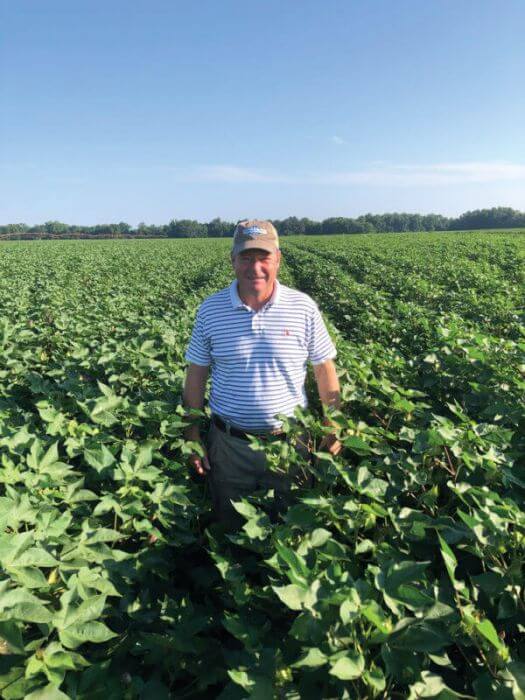
(Featured Image) Whit Player farms 1,500 acres of cotton near Bishopville, South Carolina.
Looking Back To Move Forward
Backpedal to 2021. That season was an eye-opener for Whit Player, Bishopville, South Carolina, cotton grower. He had purchased a new planter with granular applicator boxes.
Unsure of exactly what he wanted to do with the boxes, he thought back to the days of Temik (aldicarb) when his daddy hardly ever planted a row of cotton without aldicarb underneath it. Back then, they didn’t worry about thrips too much. It was almost a given Temik would take care of that problem.
With that thought long-embedded in his memory, Player decided to see if aldicarb — now sold as AgLogic aldicarb — would still give him the same peace of mind. So, he used it on a few of his 1,500 acres of cotton in 2021.
“Jerry Adams (JLA Consulting, Bishopville, South Carolina) came out and calibrated the planter,” he said. “He’s had years of experience with the product, so he rigged it up and let it go on some of the fields across different varieties, leaving part of the cotton untreated on purpose.”
An Experiment To Remember
As the 2021 season unfolded, even Adams couldn’t see much of a difference. “Maybe it’s one of those years when the cotton is just so good, you’re not going to see it,” he commented at the time.
Without even so much as a yield monitor to prove his theory one way or another, Player began harvesting his cotton in late October 2021.
“Even after defoliation we really weren’t expecting to see much difference between the treated and untreated,” he said. “We had the treated rows flagged throughout the season all the way through harvest. You couldn’t see the difference with a naked eye between treated or non-treated.”
That all changed when the picker started running. The round baler told the story.
“We started on the untreated, then switched over to the treated,” he said. “Again, I didn’t have a yield monitor on it, but you could definitely see it when it finished a bale.”
Fast Forward To Today
That was enough to convince Player he was going to make AgLogic a permanent fixture in his early season pest management program.
“When we lost Temik (aldicarb) for a few years, we moved on — or at least thought we had moved on,” he said. “Then we got it back. There’s nothing like remembering the performance of a product you thought you’d never see again. It may have a different name as AgLogic, but it’s the same product with the same benefits.”
A Plant Manager At Work
Those benefits are thrips control, nematode suppression and earliness, according to Player. But the one benefit that stood out to him last season was peace of mind. He didn’t have to be the full-time plant manager. AgLogic aldicarb handled that job for him. He felt it again this year when he put 5 lbs. of AgLogic aldicarb under his entire 1,500 acres of cotton.
“Before I started using aldicarb again, I was out there in the field shaking plants trying to figure out how many thrips I had per plant and what to do about it,” he said. “In 2021 and again his year, I didn’t have to check for thrips. I didn’t even have to get out of the truck, although I did from time to time to make sure I was right. The leaves were big, healthy and nothing was eating on them. That was AgLogic at work.”
As Extension specialists and consultants reported heavy thrips pressure at the beginning of 2022 across much of the Cotton Belt, Player was unfazed and kept rolling down the highway.
Unfortunately, Mother Nature wasn’t too kind as the year progressed, but Player is satisfied with his choice. “We have a pretty decent crop,” he said. “I’ll use the product again in 2023. It’s not a record, but it’s still a solid crop. There is nothing like the earliness factor to give you a fighting chance. Plus, it’s nice not having to get out of your truck so much. I’ve got other things to do.”